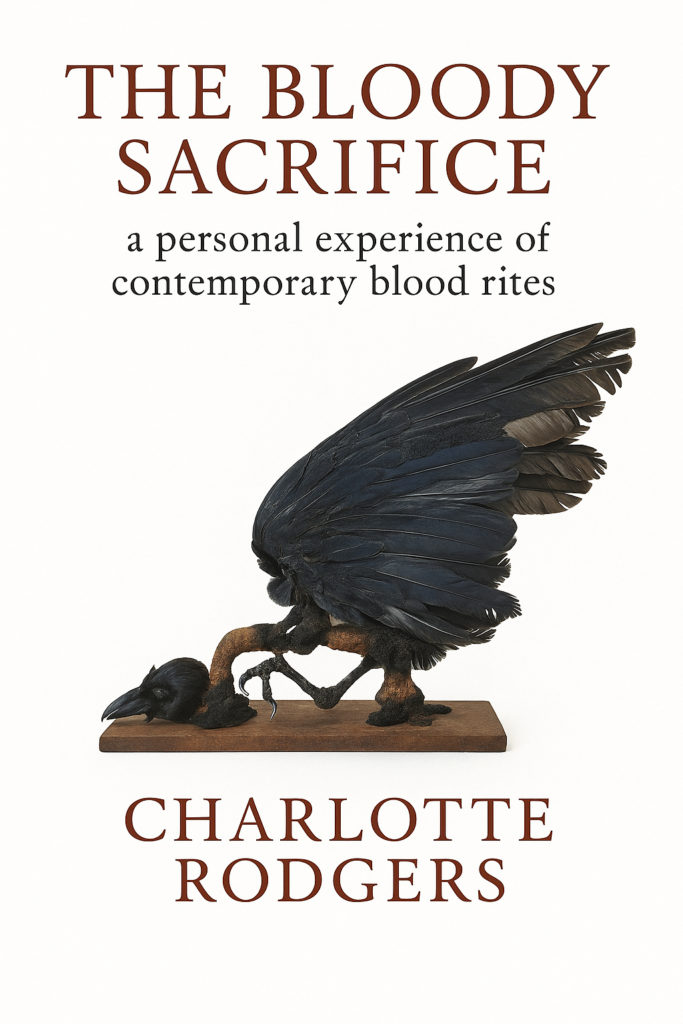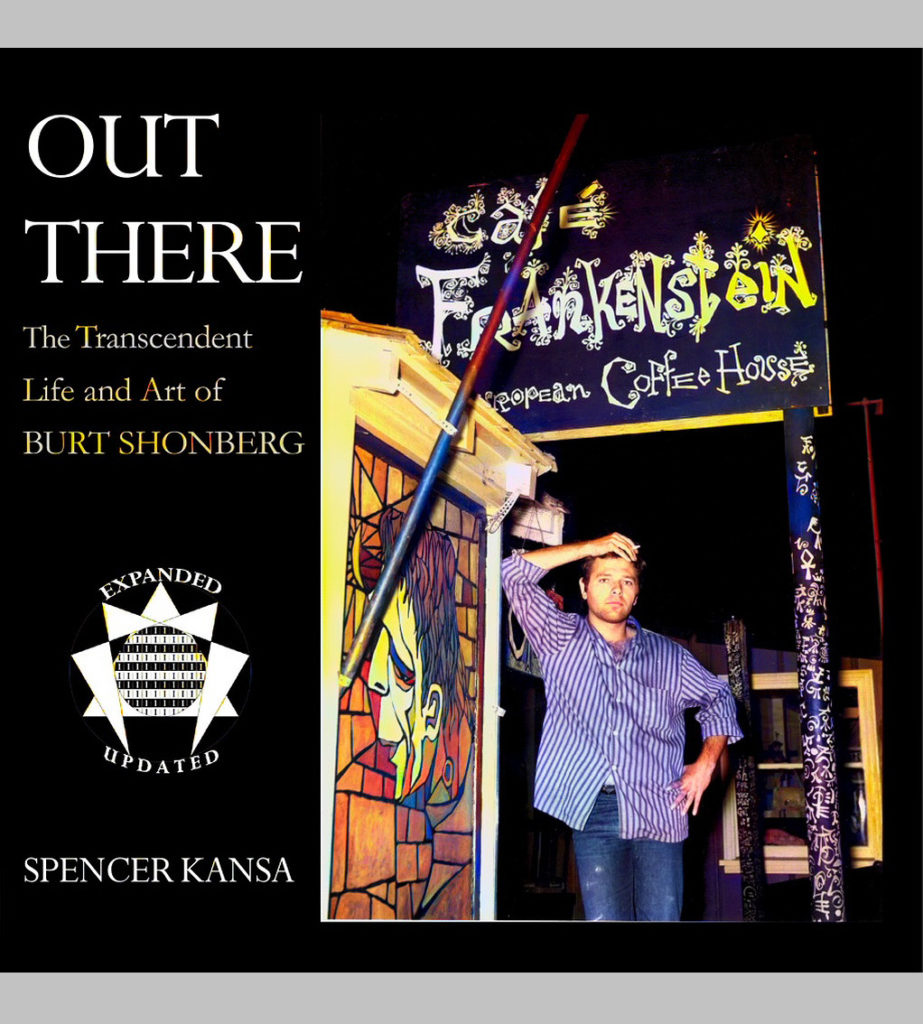
Tag Archives: Counterculture
THE BLOODY SACRIFICE
P is For Prostitution
Featured
An A-Z of a harsh life survived
Charlotte Rodgers
Illustrated by Ruth Ramsden
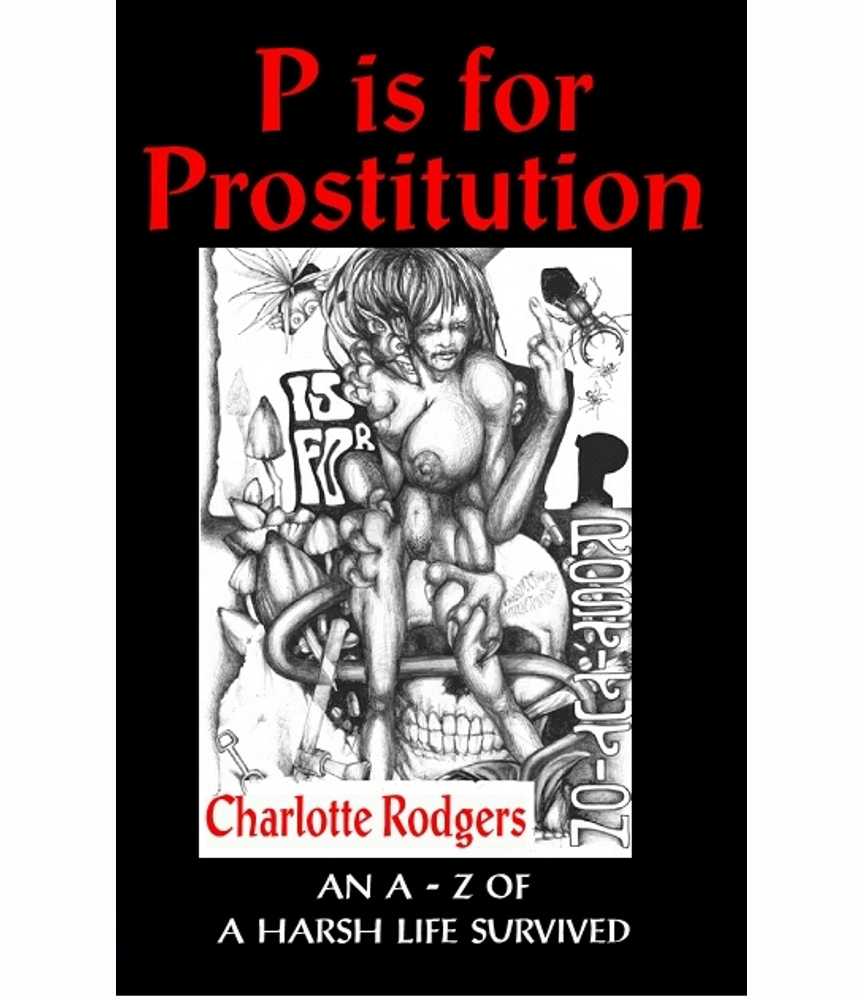
P is for Prostitution
An A to Z of a harsh life survived
Charlotte Rodgers
ISBN: 978-1-906958-26-8
£15.00 +P&P /US $24.00 +P&P
Click HERE for UK
Click HERE for USA & AUS
Click here for Kindle UK Edition
Click here for Kindle USA Edition
P is for Prostitution is a primer unlike any you will have read before, the ABC approach far from simplistic. Through various episodes the author charts her own insights into addiction and the kind of existence that inevitably goes with this. Each letter marks a step on a journey into the lowest circles of hell in which the “author’s creativity and intellect is misdirected towards a chaotic, nihilistic and devastating existence” (reader’s foreword). There are moments of black comedy, sexual horror, and final, uneasy redemption in which the author reclaims the trajectory of her life.
“. . . the life you lived . . . represents the era you grew up in and the position of women in society and the rules they were expected to live by and the consequences of breaking these rules. Women are often regarded as objects, possessions and are expected to be submissive.” (Jane Hunt)
P is for Prostitution grew out of the author’s exploration of death and ancestral cults. It led her to acknowledge her own past, re-connecting and rescuing a catalogue of youthful dead or missing loved ones. “This was no surprise given the way we lived our lives at that time, but was no less saddening. Whilst the people concerned were not blood relatives, they were part of who I was and very much my family of choice in our shared inability or refusal to accept the terms of mainstream existence.”
“Daddy was an exclamation mark /
exploding on blank walls /
I was a biblioteque hero /
supporting Atlas’ balls /
Roller skating on Freudian slips /
Pussy footing through the fly leafings/
Of fellow social misfits.”
———————-
“Charlotte Rodgers was born in New Zealand.
Her mother was a war baby, abandoned at the Home of Compassion in Wellington and later adopted by a middle class couple with strong Catholic sensibilities and a desire to do good and moral things; a desire that didn’t encompass compassionate and kind child rearing.
Charlotte’s father was Scottish and from a coal mining family, he escaped this background through self education and by joining the merchant navy, and whilst on leave in New Zealand he met and married Charlotte’s mother.
Charlotte was brought up by two creative, intelligent and unstable individuals whose backgrounds created unhappiness and various manifestations of addictive and compulsive behaviours.
The family constantly moved house, the mother was addicted to a huge amount of pills, the father would regularly ‘run away from home’ and there were many times the only stability in Charlotte’s life was when she was sent to live with her grandmother who was rigidly and violently Catholic.
Charlotte was a shy frightened and introverted child and puberty hit her like the proverbial ton of bricks. At age 15 she made several suicide attempts and was put into psychiatric care to be treated for bulimia, a condition that would stay with her for many years.
She also developed addictions to alcohol and drugs, including heroin, and necessarily worked as a prostitute to fund the habit whilst living a peripheral existence travelling through Australia, Asia and Europe, before settling in England.
After 19 years as an active addict (15 of them as an IV user) she cleaned up with the help of various institutions and agencies, and eventually was able to take the risk to go back to what she always wanted to do; creating art and writing.”
Charlotte is author and editor of The Bloody Sacrifice and
co-editor of The Contemporary Western Book of The Dead, both published by Mandrake.
——————-
Illustrated by Ruth Ramsden
——————–
Daddy was an exclamation mark, exploding on blank walls,
I was a biblioteque hero, supporting Atlas’ balls,
Rolling skating on Freudian slips,
Pussy footing through the fly leafings
Of fellow social misfits.
Well read, intellectually fed neurosis,
Genetically perfected psychosis
Penis Envy
Poison Ivy
Piss and Raving.
Something in the woodshed gave you a fright,
Rumplestiltskin will tell you anytime
Its prick is worse than its bite.
Go-go virgins in discotheque cages
Venus in politically unsound furs
Lectures on the latest psychoanalytical magus
Romulus Remus Oedipus
Sucking dugs like common curs.
Psychoanalyse, disembowel and theorise,
Penis Envy Poison Ivy
Something in the woodshed gave you a fright,
Rumplestiltskin will tell you anytime,
Its prick is worse than its bite.
C.Rodgers 1985
Vowels, Consonants and Other Building Blocks: An Introduction
Several years of exploring and writing about death and cults of the ancestors have led to my putting this, more personal book together. As I looked at how necessary acknowledgement of the past can be to solidify the sense of self, both as an individual and a member of a community; flashes of my own, personal history came back to me. I started to re connect with this and found a catalogue of youthful dead and missing loved ones. This was no surprise to me given the way that we lived our lives at that time, but was no less saddening. Whilst the people concerned were not blood relatives, they were part of who I was at that time. They were very much my family of choice in our shared inability or refusal to accept the terms that mainstream existence at that time offered. I decided to reclaim this time and a lost part of myself, by going back and recording some of my rather erratic recollections.
Initially I was worried that writing this could be self-indulgence or an exercise in personal exploration and poor man’s psychoanalysis that shouldn’t be put out to a wider audience.
However the times and places I lived in, and the way I experienced them, hold things which I believe are core to many who struggle to find their place in this strange world.
Putting such a chaotic mass of events into order could have proved an impossibility until it became apparent to me that my early years were very much about finding a set of rules to live by, thus the subtitle, ‘A Modern Primer’.
Using the alphabet to give order to these memories was a continuation of the primer concept and works well for me. My life was not lived in a straight line and my rather scrappy memory would have rebelled against too linear a form of organisation.
The time span this book encompasses is the 1970s to the 1990s and the backdrop moves between Hong Kong, Australia, London and New Zealand.
This was a time when digital watches were rare and expensive things; China was hard line communist and undeveloped; the Internet was unheard of and there was still a wall dividing Berlin. Graphic novels were on the ascent; only the super-rich had credit cards, and AIDS was just a whisper that could kill in its utterance.
When I was diagnosed with bulimia it was a relatively unknown condition that the medical establishment were unsure how to approach.
I cleaned up as crack was just starting to make its presence known and I was already seeing changes it had made in the junkie community.
Drug using rapidly became even more associated with violence, users burned out much more quickly, if they survived.
When I stopped using drugs I was 30 and considered relatively young in the ‘recovery’ community, but 18 years later I see women burned out by the time they are 15 or 16.
I was one of the first waves of people to go into drug and alcohol rehab, and sad to say the women’s only treatment centre I was in, due to lack of funding, no longer exists.
However the core of the experiences in this book isn’t era specific but is more about one individual’s rather rocky road through her early years.
One thing that I feel I should add.
Readers may find my tone to be detached and even perceive a certain lack of emotion. I was and still am an internalised person, something that may have led to some of my problems over the years.
I look at old photographs of myself and I see a lovely looking girl who seemed locked in her own world. Eventually I couldn’t stay in that private place anymore, despite ever increasing amounts of emotion suppressing drugs. When I left rehab I had a graduation of sorts, a ceremony where I was presented with a butterfly brooch. As I was given my pin, Sister Rosemary who ran the home said that when I arrived at the facility I was like the survivor of a serious car crash; locked in trauma.
Walking away from my car crash life, with its explorations, adventures, and ever increasing horror was when I really started to live.
It was a very different world then, but in many respects, the way we all live and develop has not changed at all.
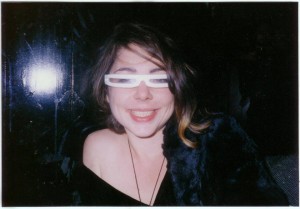
Reader’s Comment
‘P is for Prostitution’ is a personal memoir, which explores episodes and experiences from Charlotte Rodgers’ difficult chaotic life, through her childhood and into early adulthood. At times this book made me feel incredibly sad and much of it was alien to my own comfortable, relatively trouble-free youth. However, her story captivated me and I found myself wanting to find out more about the girl being described. Also, as a woman who grew up during the same decades, I recognized the underlying misogyny of the era and the rules that women were expected to observe. Both Charlotte and her mother suffered in different ways because they were unable to live within narrow definitions of womanhood.
The Primer structure works particularly well and gives the impression of bringing order to a fragmented and chaotic existence. It comments on the nature of individual memory that is not linear and makes connections between disparate incidents and episodes. This form enables the reader to think for herself and reflect on how Charlotte’s childhood and formative experiences affect her situation as she grows up.
Throughout P is for Prostitution, despite the chaos of a life dominated by addictions and illnesses, Charlotte remains a creative and intellectually curious person. Her attraction to similar damaged anarchic souls both as friends and lovers can be seen at various points in her book. Near the end she refers to ‘the person from Porlock’, a debt collector who interrupted Coleridge whilst he was writing Kubla Khan. Charlotte writes, “I feel as if I too had a debt collector knocking on the door of my life, and breaking and permanently redirecting my concentration.” The book conveys a real sense that Charlotte’s creativity and intellect was somehow misdirected at a young age towards a nihilistic and savage existence. It also traces the constant, durable thread of spirituality in her life. This is fascinating given her early encounters with Catholicism.
The book powerfully communicates the devastating effect of physical and mental abuse on Charlotte’s whole family. The suffering her parents endured as children impacts on Charlotte’s life and leads to a lack of stability and security when she is growing up. Charlotte too is terrorized as a child whilst under the ‘care’ of her Grandmother. The sexual repression, religious fanaticism and cruelty that lie behind this abuse are horrifying. Children’s lack of power and the lasting consequences of adult neglect and brutality are recurrent themes.
The reader is able to observe how Charlotte’s eating disorders are caused by a desire to gain some control and how the perception that thinness equals happiness and acceptance actually appears to have almost the opposite effect. This is something that all women can relate to at some level. The book also gave me an insight into addiction and the kind of existence that inevitably goes with it. Her experiences are distinctive but they do reflect the times she lived in and the alternative lifestyle that seemed to be offered by the world of drugs and music. The attraction of losing control and finding a different reality is explored. However, the destructive power of addiction ultimately makes life unbearable.
Charlotte’s discussion of sex in P is for Prostitution is thought-provoking and brave. Her unconventional attitudes and approach made me think hard about the way women are condemned and vilified for sexual transgressions. Moreover, it made me consider how women and children are so often the victims of abuse and the hypocrisy that existed about this when we were growing up and still does to a large extent. Women who transgressed the sexual norms or accepted codes of behaviour were seen as to blame for the abuse they suffered, rather than as victims.
Fundamentally, this is a fascinating articulate and engrossing book. It describes experiences and feelings with which many people, especially women, will identify. I think people will enjoy Charlotte’s honesty and will want to read on and find out how she manages to get through and eventually change her life permanently. Charlotte takes you into divergent worlds, often frighteningly disordered; but the creative, compassionate and intelligent woman that she is today, is always there despite the destructive forces in her early life.
Jane Hunt
Librarian
Somerset
*************************************************************************
Mind-Sprung
Featured
AD Harvey
(Crime Fiction)
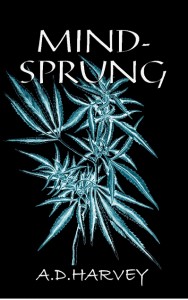
Mind-Sprung
AD Harvey
Format: Softcover
ISBN: 978-1-906958-67-1
£10/US$16
Subjects: Crime Fiction/Entheogens/Counterculture.
UK Buyer
US & Row
An A-Level drop-out graduates from evicting immigrants during the heyday of the inner-city slum landlords during the 1960s to stripping redundant churches during the early 1970s, before moving to northern Sweden equipped only with the proceeds of selling stolen property and some hashish. He finds new sources of hashish even in Sweden but eventually the money runs out, and he returns to London: only to discover it is even worse than when he left.
Eric Naiman, a Professor of Russian and Comparative Literature at Berkeley, in a six-page attack on A.D.Harvey’s multitudinous literary crimes in THE TIMES LITERARY SUPPLEMENT in 2013, described Harvey’s account of drug-taking and other shenanigans in London and the Swedish Arctic as “unreadable”, but perhaps that was because he hadn’t actually read it. Another of A.D.Harvey’s novels, WARRIORS OF THE RAINBOW was described by THE GUARDIAN as “weirdly compelling” and by THE INDEPENDENT as “free-flowing and poetic….unforgettable.”
The Magical Universe of William S. Burroughs
Featured
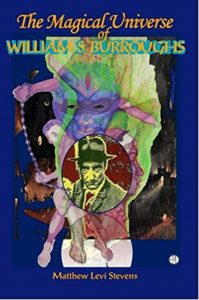
The Magical Universe of William S. Burroughs
Matthew Levi Stevens
Format: Softcover
ISBN: 978-1-906958-64-0
£15.00 / US$24.00
Subjects: Counter-Culture/Magic/Occult/Biography/American Underground.
Click HERE for The Magical Universe of William S. Burroughs / UK
Click HERE for The Magical Universe of William S. Burroughs / USA
Click here for Kindle UK Edition
Click here for Kindle USA Edition
“In the magical universe there are no coincidences and there are no accidents. Nothing happens unless someone wills it to happen. The dogma of science is that the will cannot possibly affect external forces, and I think that’s just ridiculous. It’s as bad as the church. My viewpoint is the exact contrary of the scientific viewpoint. I believe that if you run into somebody in the street it’s for a reason. Among primitive people they say that if someone was bitten by a snake he was murdered. I believe that.”
– William S. Burroughs
Fully revised and expanded from the limited edition chapbook that first appeared in 2012, The Magical Universe of William S. Burroughs is the first ever in-depth consideration of the significance of Magic and the Occult in the Life & Work of the writer and counter-cultural icon.
In Literary Outlaw: The Life and Times of William S. Burroughs, his biographer Ted Morgan wrote:
‘As the single most important thing about Graham Greene was his viewpoint as a lapsed Catholic, the single most important thing about Burroughs was his belief in the magical universe. The same impulse that lead him to put out curses was, as he saw it, the source of his writing…’
‘To Burroughs behind everyday reality there was the reality of the spirit world, of psychic visitations, of curses, of possession and phantom beings…’
From the Introduction to The Magical Universe of William S. Burroughs:
In talking about The Magical Universe of William S. Burroughs I am really thinking of two things:
Firstly, and probably most obvious, is the material that appears in the output of Burroughs the Writer that can be seen as describing or referring to some magical, mystical or occult idea – Invocations of Elder Gods of Abominations, descriptions of Sex-Magick rituals, references to amulets, charms, ghosts, omens and spells – all the thematic set-dressing that we all know and love, from Hammer Horror Movies to Weird Tales, from H. P. Lovecraft to Dennis Wheatley and The X-Files…
Secondly, there is the personal interest and involvement of Burroughs the Man with belief systems and practices that come from those strange ‘Other’ territories that lay outside the bounds of either conventional mainstream religion or scientific materialism – explorations of L. Ron Hubbard’s Scientology, Konstanin Raudive’s Electronic Voice Phenomena, Wilhelm Reich’s Orgone Accumulator; also partaking of the Vine-of-the-Soul with Amazonian shamans, attending the Rites of Pan in the Rif Mountains outside Morocco, participating in a Sweat-Lodge with Native American Indian medicine men – and, latterly, an engagement with that most Post-Modern of Occultisms, Chaos Magic.
The material considered has been distilled from archival sources, correspondence, interviews, and of course, published works. As well as his own personal contact with Burroughs and his lifelong study of the Man and his Work, the author also draws from a wide range of former associates – collaborators, friends, lovers, and students – including C. J. Bradbury Robinson, Michael Butterworth, David Conway, Phil Hine, Graham Masterton, Malcolm Mc Neill, and others.
As well as his own contact with the likes of Genesis P-Orridge, John Balance & Peter Christopherson of Coil, and writer Terry Wilson, back in 1980s London, he has also had unprecedented access to the papers of Cabell McLean, a young writer who was William’s companion, lover & student, c.1976-1983.
—
Sometime in the nineteen-seventies, following a reprint of my book, Magic: An Occult Primer, a letter was forwarded to me by my then publisher. Poorly typed and in an envelope which, unless my memory deceives me, bore no postage stamp, it came from William S. Burroughs. I still have it somewhere. In it the writer made plain his interest in magic. In real magic that is, not the smoke and mirrors kind.
Given that Burroughs’ tireless ambition was to encounter a reality beyond that accessible to our five senses, with magic perceived as an effective means to that end, it is remarkable that the subject has hitherto received but scant attention.
This work, by Matthew Levi Stevens, who must have encountered Burroughs at around the time he wrote to me, sets out to make up for that deficit. In it he chronicles the man’s interest and examines the part magic and occultism generally played both in his life and in his work.
Stevens sets about the task with gusto, indicative of his respect and, indeed, affection for “Uncle Bill”, as well as his familiarity with the topic itself. He draws on Burroughs’ own writings, and on those of the growing number of people, supporters and critics alike, who have commented on him and his literary output.
It is a job well done. And one that is all the more welcome because long overdue . . .
– David Conway, 2014.
RADICAL DESIRE
Kink & Magickal Sex
Mark Ramsden & Ruth Ramsden
(Erotica) (Fetish) (Non-Fiction)
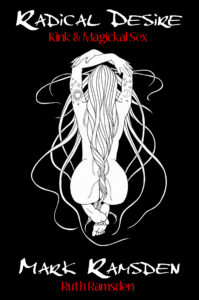
Radical Desire
Kink & Magickal Sex
Mark Ramsden & Ruth Ramsden
Format: Softcover/140pp
ISBN: 978-1-906958-19-0
£15.00 / US$24.00
Subjects: Erotica/Fetish/Tantra/Erotic Art/Non-Fiction
USA & AUS editions
–
RADICAL DESIRE
Re-written with much new material
Completely new illustrations & 3 bonus short stories
“The wit and wisdom of Mark Ramsden’s illuminating text delivers a gripping journey through a rich seam of sexual expression. Read this book, enjoy this book, for it deserves your utmost attention. Over 40? Fat? The style gurus say you’re not sexy, not horny, this book says ‘Bollocks!’ An essential reference work… And bloody good fun too.” – – John Carter
Radical Desire review on Amazon
“This slim (140 pages) book is part brutally honest, unpretentious and often hilarious autobiography, (page 28 is a full page photograph of Mr Ramsden’s pierced penis with the caption “The author making a dick of himself with his eighth Prince Albert upgrade”) part encyclopaedia of fetish (including Piercing, Corsets, Rubber, Switching and Scarification) part tour guide for fetish-loving tourists (“Some say the dungeon play (at Club Rub) is not as extreme as at certain clubs but then I don’t go to a club to see perverts fisting each other. I can get that at home.”) part fine visual art (all illustrations by Ruth Ramsden) and part fiction (2 kinky short stories, here’s an excerpt from “Madam Petra”: Sometime, somewhere, we are always together. Exchanging fragments of dreams and whispered prayers. In the long, slow, sweet dance of desire. Warmed by a pussycat smile.) and entirely satisfying.
”Radical Desire: Kink & Magickal Sex, is not so much a book as it is an experience; one that kinksters, new, experienced, or jaded, should not miss.”
– Madeleine
—
The Author
en.wikipedia.org/wiki/Mark_Ramsden
ALSO BY THE SAME AUTHORS:
The DARK TANTRA TAROT is a synthesis of sex, fetishism and spirituality created by Mark & Ruth Ramsden.
www.darktantratarot.moonfruit.com
Read a review of the DARK TANTRA TAROT on the AECLECTIC TAROT WEBSITE
www.aeclectic.net/tarot/cards/dark-tantra/review.shtml”
BLUE MURDER at THE PINK PARROT
A flamboyant, surreal, stylish, erotic, noir thriller novel by Ruth Ramsden.
Read a sample chapter, read the reviews and get a copy of BLUE MURDER at THE PINK PARROT on www.amazon.co.uk website
www.amazon.co.uk/Blue-Murder-at-Pink-Parrot/dp/1908122242

